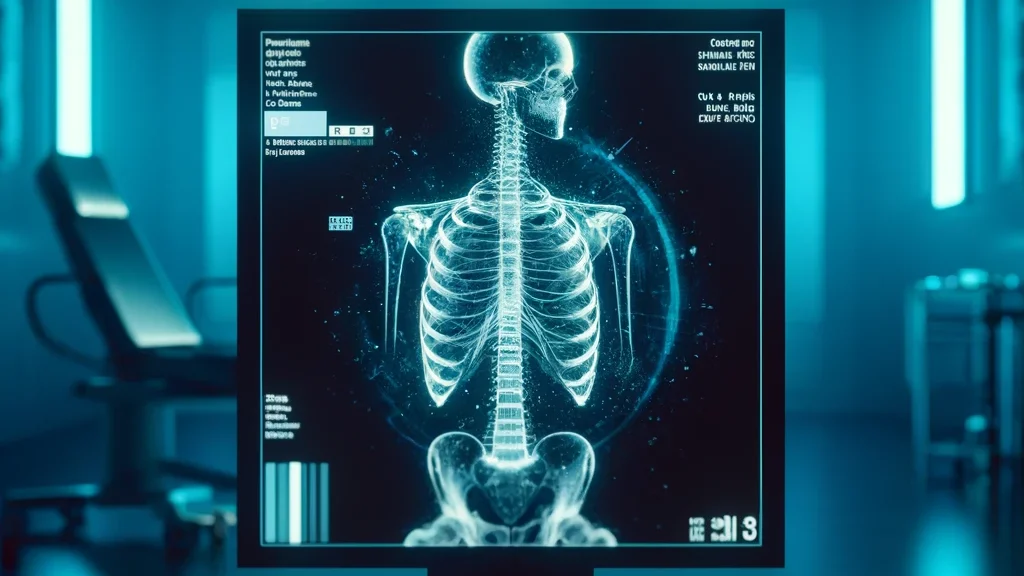Table of contents
Introduction
X-rays, a type of radiation, are closely related to our daily lives and have become indispensable. Since Wilhelm Conrad Roentgen’s accidental discovery in 1895, X-rays have established themselves as an essential tool in the medical field, greatly enhancing diagnostic accuracy by allowing us to see inside the human body. However, many people are only familiar with the basic knowledge of X-rays and are often unaware of the subtle differences. Therefore, let’s briefly look at the basic knowledge about medical X-rays.
Subtle Differences in X-ray Technology
Differences between X-ray and CT, and their distinct diagnostic values
You might have experienced both X-ray and CT scans during a hospital visit, and perhaps complained, “Why go through all these tests instead of just doing a CT?” However, while both X-ray and computed tomography (CT) use radiation, they differ significantly in their methods and purposes. X-rays create images by passing radiation through the body from a single direction, whereas CT scans provide more detailed information by creating 3D images from multiple angles. Thus, CT scans are particularly advantageous when it’s necessary to understand complex internal structures.
Comparison between Digital and Analog X-ray Systems
Invisible X-rays can be compared to camera systems we have experienced. There are film cameras (including Polaroids nowadays), and there are digital cameras like those in smartphones. Similarly, traditional analog X-ray systems capture images on film, whereas digital systems use electronic sensors to immediately convert images into digital data. This transition enhances image quality, reduces radiation exposure, and shortens image processing time.
Safety-related Facts
The truth about radiation exposure and dose management
While medical X-rays are essential, it’s crucial to minimize radiation exposure. Medical institutions manage this by setting ‘dose limits’ and rigorously monitoring patient exposure. This is important for balancing the need to obtain necessary diagnostic information while ensuring patient safety.
Radiation protection equipment and its impact on the human body
Radiation shielding garments, lead glass, and radiation-blocking walls are used to protect both patients and medical staff. These are essential defensive measures, especially important in medical environments where long-term exposure is a concern. Asking about shielding unnecessary parts of your body during a scan can protect your precious health while ensuring diagnostic value.
Technological Advances
Developments in the latest X-ray technology and real-world comparisons
Recent advancements have enabled X-ray equipment to capture even finer details. For instance, digital noise reduction technology and high-resolution imaging help doctors make more accurate diagnoses. These technologies are particularly valuable in fields like cancer diagnosis.
Integration of Artificial Intelligence and its impact on future healthcare
X-ray systems integrated with artificial intelligence (AI) automate image interpretation and contribute to reducing diagnostic errors. AI enhances medical service efficiency by identifying subtle abnormalities through pattern recognition and enabling faster diagnoses.
Clinical Applications
Use of X-rays in specialized medical fields
In orthopedics, for example, X-rays are crucial for diagnosing fractures. They help in planning treatment and comparing pre-and post-surgical conditions. Also, Chest X-rays are often taken at large hospitals or during initial medical consultations because they provide a quick, non-invasive assessment of the lungs, heart, and overall upper body condition.
Factors affecting diagnostic accuracy and practical applications
The diagnostic accuracy of X-rays depends not only on technological advancements but also on the experience and skill of the interpreting physicians. Well-trained technicians using the correct techniques and equipment can significantly improve both the accuracy and safety of diagnoses. The recent introduction of AI, as mentioned earlier, also contributes to reducing diagnostic errors, promising even higher diagnostic accuracy in the future.
Economic and Environmental Impact
Economic costs and efficiency of X-ray equipment
X-ray technology is a cost-effective diagnostic tool. However, the high maintenance and operational costs of expensive equipment can be a significant burden on medical institutions. Thus, efficient management and usage are crucial for long-term maintenance.
Recycling and disposal of equipment and its impact on nature
Used X-ray equipment and supplies can adversely affect the environment. Proper recycling and disposal are crucial for environmental protection and sustainable medical practices. Medical waste, including radiation waste, must be properly segregated and disposed of following expert guidelines and instructions.
Conclusion
Medical X-rays continue to evolve, enhancing the accuracy of medical diagnoses. However, it’s important to be aware and acquire knowledge as the management of radiation safety and environmental responsibility are also critical.






